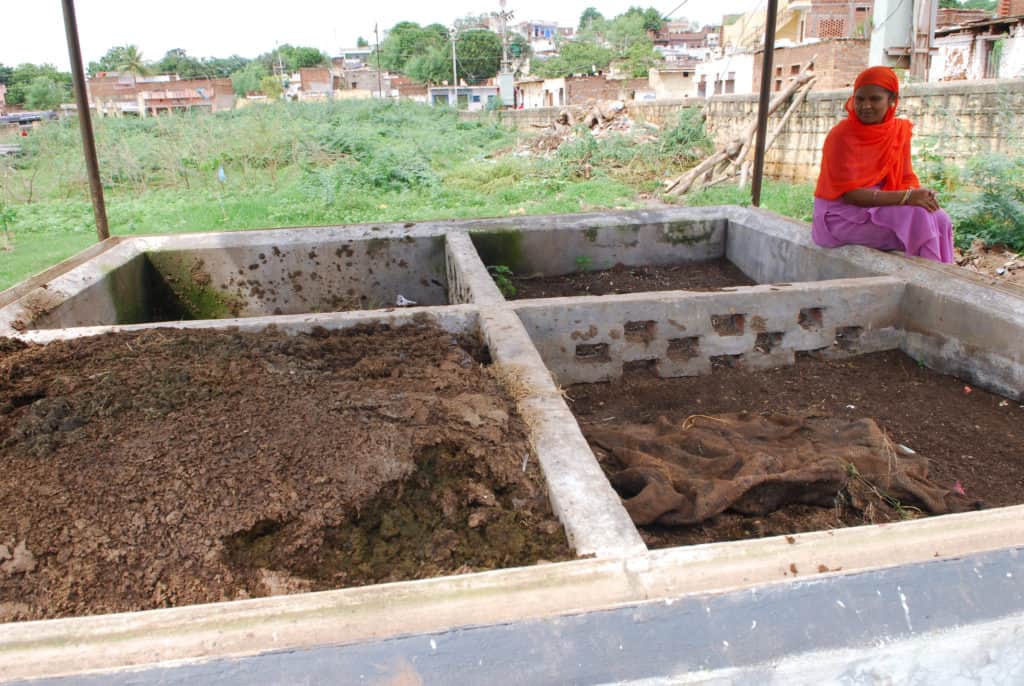In 2016, the Government of India (GOI) launched a policy for city waste management. The plan was simple yet innovative − to convert the organic kitchen waste into manure for farmers. However, four years later, the project seems to be falling out of place with little progress.
India tops the world chart for producing the maximum waste. Every day, 1.3 billion people produce about 150,000 (1.5 lakh) tonnes of solid waste. With 25% of global food production, India is the largest food producer in the world and consumes about 27% of agricultural produce. Reports suggest that developing countries like India produce more wet and organic waste. Considering this, the country has the capability to open up more scope for turning the waste into manure.
Read more: What makes our cities clean: On Swachh Survekshan, rankings and beyond
Under the government’s Policy on Promotion of City Compost, that was approved in 2016, the fertiliser companies would be assisted with Market Development Assistance (MDA) funds to create a market for the farmers to use the city compost. The monetary benefit of Rs. 1500 per tonne of city compost, should have helped the companies to increase their production, meanwhile making it cheaper for the farmers to buy organic manure. This arrangement should have increased the demand for the product. However, companies complain of delayed compensation and the manure has not been able to attract farmers much or compete with the chemical fertiliser market.
Lacks funds, support and right tech
Since the launch of the scheme in 2016, the government has been able to release only 33.4% of the allocated MDA. This decreases the interest for the fertilizer companies to invest in the production of manure. The waste decomposition and manure formation need special attention and dedicated technology. The government has to step in and support the market while creating a demand from the farmers to use the manure.
“The issue is two ways, the acceptance of such manure and the production of the same are to be addressed if the policy has to show colours”, mentions Sandeep Kumar, who is a waste management and waste to energy expert based in New Delhi. He adds that when kitchen waste is to be converted into manure for agricultural use, proper technology and treatment is required.
If not properly treated with the right technology, the kitchen waste might act against agriculture, leading the seed from the food waste to germinate and act as weed to the crop production. The composition of the waste also changes with respect to seasonal nature of various food and kitchen waste.

While composting reduces the amount of waste generated, it also reduces the production of harmful gases generated by the waste. According to a 2015 report, by GHG Platform, a civil society collective, about 4% of GHG emissions are contributed by the waste sector in India. Methane (CH4) is produced and released into the atmosphere as a by-product of the anaerobic decomposition of solid waste and nitrous oxide (N2O) is emitted due to the protein content in domestic waste. Compost from city garbage would not only provide carbon and primary/secondary nutrients to soil but also help in keeping the city clean, along with giving the farmers an alternative to chemical fertilisers, which also pollute the ground and water resources. However, the scheme has been effective only to generate about 1.6% of total waste into fertilisers.
Conflict of interest
Another important and noteworthy issue is the conflict of interest. The fertilizer companies are not bound or mandated by the government to enroll themselves in the scheme. Hence, the chemical fertilizer companies are unlikely to be interested or enthusiastic to promote and sell the organic manure to the farmers.
The money allocated for MDA subsidy has not been enough, considering the amount of technological advancement the country needs in this direction. Apart from the tedious process of claiming the MDA, the amount released by the government is unmatched.
Read more: Why bioremediation is not a magic pill for India’s overflowing landfills
In 2019-20, the sale by marketing companies was 215725.88 metric tonnes, while the budget allocation and MDA released were Rs. 32 crores respectively. This year, in 2020-21, the sales were 99366.40 MT with the budget allocation at Rs. 29 crores and the MDA released Rs. 17.36 crores, according to the Ministry of Chemicals & Fertilizers India.
To increase the sale and production of organic compost in the cities and promotion for the farmers to use it, about 489 villages are to be involved with the fertiliser companies to give the scheme a shape and for the promotion of the use of city compost. With the help of state level steering committee in 12 states, along with the Krishi Vigyan Kendra (KVKs) of ICAR, compost units were to be set up. But this still remains a distant dream.
Recently, the government of India also issued a notice to allow the companies to sell bulk compost which should help the companies to reduce their cost of production and allow the farmers to have more outlets to get the organic manure from. However, in the absence of optimal market conditions, financial disabilities and environment for composting, the well-intentioned solution to deal with the waste is not as successful as it could have been. The proper interaction of three responsible ministries — Ministry of Housing and Urban Affairs, Ministry of Chemicals and Fertilizers, and Ministry of Agriculture and Farmers’ Welfare, could find a better solution to the policy and its success.
[This story was first published on Mongabay. It has been republished with permission. The original article can be found here.]